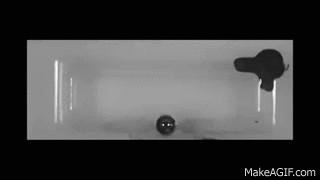Tiny pump brings big plans with one drop of metal
A new device uses a single ball of liquid metal to pump fluids around a circuit – an extremely important breakthrough for building the miniature laboratories of tomorrow.
The new design is being hailed as the world's first liquid metal enabled pump. It is a potentially revolutionary micro-scale device with no mechanical parts, which should be used in a range of not-yet-invented micro-fluidic devices.

The pump solves an ongoing problem for engineers trying to build the lab-on-a-chip; micro-sized but incredibly powerful diagnostic tools which do not need entire research centres to house.
Dr Khashayar Khoshmanesh from RMIT says there has been no easy way to drive liquid around a fluidic chip in micro-fabricated systems.
“Just as integrated micro-electronics has revolutionised the way that we process information – enabling the development of computers and smart phones – integrated micro-fluidics has the potential to revolutionise the way we process chemicals and manipulate bio-particles at the micro-scale,” he said.
“Lab-on-a-chip systems hold great promise for applications such as biosensing and blood analysis but they currently rely on cumbersome, large-scale external pumps, which significantly limit design possibilities.
“Our unique pump enabled by a single droplet of liquid metal can be easily integrated into a micro device, has no mechanical parts and is both energy efficient and easy to produce or replace,” Dr Khoshmanesh said.
“This innovation shows that micro- and nano-scale pumping can be accomplished with a simple system – a crucial advance for the field of micro-fluidics.”
The design uses droplets of ‘Galinstan’ – a non-toxic liquid metal alloy comprised of gallium, indium and tin – as the core of a pumping system to induce flows of liquid in looped channels.
When the alloy is activated by applying a voltage, the charge distribution along the surface is altered.
This propels the surrounding liquid without moving the Galinstan droplet through the loop, using a process called “continuous electrowetting”.
The pump is highly controllable, with the flow rate adjusted simply by altering the frequency, magnitude and waveform of the applied signal.
The flow direction can also be readily reversed by reversing the polarity of the applied voltage.
The breakthrough was made via the collaboration of experts from a number of different fields.
Doctoral researcher Shi-Yang Tang, Dr Vijay Sivan, Professor Arnan Mitchell and Professor Kourosh Kalantar-zadeh, from the RMIT School of Electrical and Computer Engineering, and Phred Petersen, from the School of Media and Communication joined with lead investigator Dr Khoshmanesh from RMIT’s Centre for Advanced Electronics and Sensors.
The team collaborated with researchers from the Queensland University of Technology and University of Adelaide on the research.








 Print
Print